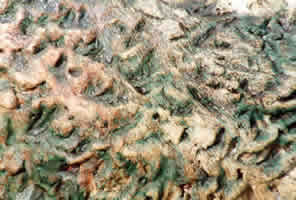METHODS OF CONSTRUCTION
The method of construction of my work is actually very simple in as much I start from the bottom and work my way up.
When making a sheep once the legs have been modelled and pulled into shape (like a handle for a mug for example) I coil the rest. Timing is very important to the success of the piece as is the handling of it before it goes into the kiln.
The legs, once finished have to dry out enough to take the weight of what will be piled on top, which can take three days at normal room temperature keeping the ends of the legs moist enough to stick to the base and add soft clay in order to start making the shape.
Surfaces are very important to me whether the glaze produces the surface or the making process produces the surface, often it is a mixture of both.
To produce the sheep surface I use a metal modelling tool for the texture I put on the sheep. Using the clay quite soft I whisk the clay to simulate a woolly feel and for the face I use an old nailbrush to stipple the surface.
For the pigs I roll a metal pan scourer across the clay, which works very well and is relatively quick.
Clays, Glazes and Slips
I use Scarva Earthstone smooth textured (white stoneware body) I have to say it is very reliable and If I do get cracks it often can be solved by altering the firing cycle.
It can overcome the variable thickness of my work and all the stresses the clay undergoes with firing to stoneware temperatures. It seems to work most of the time.
I use a range of coloured slips and glazes. The slip is simply the same as the clay body with commercial colours added apart form the black where alongside the commercial colour I add a good spoonful of copper per bucket. This gives the slip a better intensity of darkness.
Sheep
For my sheep I also use a glaze which I refer to as the ‘Sheep Glaze’ :- 1270°C Potash Feldspar 25 Whiting 25 China Clay 40 Coleminite 3 Copper Oxide 4 This I apply in random patches, which when worked into the slip gives the surface more depth. I then, with a stiff brush texture the surface of the sheep, then finally I dribble a thin wash of oxide over the animal, which picks up the brushed surface of the slip and glaze.

Pigs
With the Pigs I often use three of four layers of slip and wash it of gradually which leaves a distressed affect, a good overall and a pair of Wellingtons will save you a change of clothes. Once the pig is almost dry an oxide rub is massaged into the surface.
Horses
The horses are carefully sprayed with a very fluid Earthenware glaze – 1070°C Lead sesquisilicate 70 Flint 4 Calcium Borate 20 China Clay 7 Once a thin layer has been applied, similar coloured earthenware glazes are brushed on thickly and oxides randomly spattered all over the glazed surface. As the glaze is so fluid it will pulls and merges most of the unintentional splodges.

Jon packing the kiln with sheep




